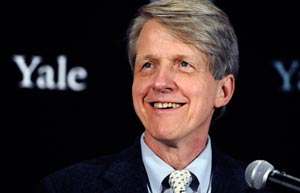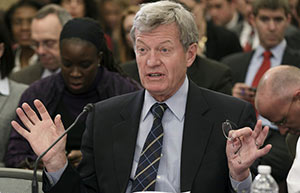Chinese expat flies high in aviation sector
By Wang Wen (China Daily) Updated: 2014-02-20 07:38Xie said he spent some time learning about the state of the nation, including communication methods in China, when he came back in 2004.
"Frankly speaking, I was pessimistic about China before I came back - after all, my knowledge about China was locked in the early 1990s," he said.
After a short learning process, Xie overcame his surprise at China's changes and became familiar with the new way of life, he added.
 On the other side, Chinese executives also usually experienced an international company's pioneering days in China, which had a large share of difficulties.
On the other side, Chinese executives also usually experienced an international company's pioneering days in China, which had a large share of difficulties.
Xie's first big footprint in China was made at the Shanghai Engine Center - a joint venture between United Technologies and China Eastern Airlines Corp Ltd, which opened for business in 2009.
The joint venture provides a maintenance, repair and overhauling service for CFM56 engines for both China and overseas customers in the region.
"We delivered our 300th serviced engine recently," said Xie, who is very proud of the facility's growth.
But the other side of the story is that the project took Xie more than three years to communicate with every side in the joint venture's establishment.
The Yale graduate continues to take charge of the group's aerospace business, including engines, helicopters and systems.
"I can feel the excitement of the aviation industry, although I do not know much about technology," Xie said.
United Technologies provided spacesuits for man's first landing on the moon. Its technologies was also used by the allies during the World War II.
Along with the development of the aviation manufacturing industry, China also became an important part of United Technologies' production chain.
The group's aerospace business has more than 20 suppliers in China and plans to double its purchases to $300 million by 2016, Xie said.
United Technologies is also a supplier for the C919 - China's home-made large passenger aircraft. The company and the developer and maker of the C919, Commercial Aircraft Corp of China Ltd, has already built up a joint venture for the big carrier's power-supply systems.
"I will lead the group in continuing to explore China's aviation industry," Xie said.
But as president of United Technologies government relations in China, a tougher task for Xie's position is to integrate the different brands of the group.
|
 |
 |
- NHTSA says finds no 'defect trend' in Tesla Model S sedans
- WTO rare earth ruling is unfair
- Amway says 2014 China sales may grow 8%
- President Xi in Europe: Forging deals, boosting business
- CNOOC releases 2013 sustainability report
- Local production by Chery Jaguar Land Rover this year
- Car lovers test their need for speed in BMW Mission 3
- China stocks close mixed Monday

















